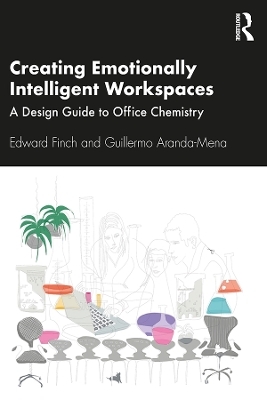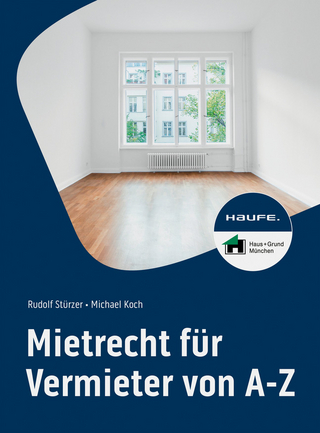
Creating Emotionally Intelligent Workspaces
Routledge (Verlag)
978-1-138-60247-2 (ISBN)
Emotions in the workplace have until recently been seen simply as a distraction. We often think of work as rational, logical and non-emotional. But organisations are waking up to the key role of emotions and affect at work. Emotions influence how we make decisions, how we relate with one another and how we make sense of our surroundings.
Whilst organisations are slowly embracing the pivotal role of emotions, designers and managers of workplaces have been struggling to keep up. New insights from hard sciences such as neuropsychology are presenting a radically different interpretation of emotions. Yet workplace designers and facilities managers still rely on measuring non-specific states such as satisfaction and stress.
In this book we attempt to capture modern-day interpretations of emotion, looking at emotion in terms of transactions and processes rather than simple cause and effect. We entertain the idea of an ‘emotionally intelligent building’ as an alternative to the much-hyped intelligent building. The assertion is that we should create environments that are emotionally intelligent. Rather than focusing on the aptitudes or shortcomings of individuals at work, we should place closer attention on the office environment. It’s not that we are emotionally disabled – it’s the environment that disables us! The ability of you and me to interpret, control and express emotions may not simply be a result of our own make-up. A radically different outlook considers how our workspace and workplace debilitates or enables our emotional understanding.
In the modern workplace there are many innovations that can undermine our emotional intelligence, such poorly implemented hot-desking or lean environments. Contrariwise there are key innovations such as Activity Based Working (ABW) that have the potential to enhance our emotional state. Through a series of unique case studies from around the world, we investigate key concepts that can be used by designers and facilities managers alike. No longer should designers be asked to incorporate emotional elements as intangible un-costed ‘add-ons’. This book provides a shot in the arm for workplace design professionals, pointing to a new way of thinking based on the emotional intelligence of the workplace.
Edward Finch is a freelance ‘thought leadership’ author. He obtained his PhD from the University of Reading in 1989 and was Professor in Facilities Management at Salford University (2008–2011). He acted as Editor-in-Chief of the academic journal Facilities for 15 years. His writing challenges technological myopia in the workplace, suggesting that we also need to understand what it means to be human. Guillermo Aranda-Mena is Associate Professor at RMIT University in Melbourne, Australia, and Visiting Professor of Architecture at Politecnico di Milano, UNESCO Chair in Mantua. In 2003 he completed his PhD at the University of Reading and has since collaborated with numerous universities around the world. He continues to travel widely and divides his time between Singapore, Hong Kong, Mexico, Italy and Melbourne, where he currently resides with his partner Dee and son Memo.
Table of contents
Contents
Chapter 1: Introduction
Leveraging the power of emotion
What do we mean by emotional intelligence?
Feelings or emotions?
From ‘know-how’ to ‘know who’
Summary
Chapter 2: Understanding emotions in the workplace
The ABC of the human mind
Emotion in stages
Types of emotion
Positive psychology
Emotions in practice
Emotion, mood and temperament
Emotion and the environment
Summary
Chapter 3: Can a workspace motivate us?
Form follows function
Form follows emotion
Evolution of the office
What makes people tick?
Maslow’s hierarchy of needs
Physiological needs
Safety needs
Affiliation and belongingness needs
Status and esteem needs
Self-actualisation
Criticisms of Maslow’s hierarchy of needs
ERG Theory
Summary
Chapter 4: The many faces of the Intelligent Building
The death of permanence
Layers within layers
The emergence of the intelligent building (IB)
The High-Tech Building
The Flexible Building
The Interoperable Building
The Green Building
The Arrival of the ‘Sentient Building’
On collision
Emotion detection
Summary
References
Chapter 5: The Emotionally Intelligent Building
Defining emotional intelligence
Can a workspace have emotional intelligence?
Ability Model
Mixed models
Defining the Emotionally Intelligent Workplace
Making sense of it all
The Three Dimensions of Workspaces
The green bus
Putting the pieces together
Emotional Mechanisms
Creating the emotional palette
An emotionally intelligent work setting
Summary
Chapter 6: Emotion and the instrumental workspace
Understanding the instrumental perspective
The non-territorial office
Laying down the law
Fitting the person to the workplace
User-centred design
Nomad or vagrant?
Replacing physical walls with psychological walls
The emergence of Activity Based Working (ABW)
The truly territorial office
Behaviour Change
Nudge
Summary
Chapter 7: Emotion and the aesthetic workspace
Being there
Aesthetics and the senses
Aesthetics and emotions
Biophilia and Biomorphic design
Fractals
Neuroaesthetics and Neuroarchitecture
Summary
Chapter 8: Emotion and the symbolic workspace
What is a symbol?
Symbolism and the organisation
The production of space
Workplace Identity
Liminal space
Investigating a ‘crime scene’
Enclosures
The IKEA Affect
Our Biological Wi-Fi
High-trust culture
Temperament
Summary
Chapter 9: Conclusions
Reflections
| Erscheinungsdatum | 18.09.2019 |
|---|---|
| Zusatzinfo | 2 Tables, black and white; 20 Line drawings, black and white; 6 Halftones, black and white; 26 Illustrations, black and white |
| Verlagsort | London |
| Sprache | englisch |
| Maße | 174 x 246 mm |
| Gewicht | 240 g |
| Themenwelt | Geisteswissenschaften ► Psychologie ► Allgemeine Psychologie |
| Geisteswissenschaften ► Psychologie ► Arbeits- und Organisationspsychologie | |
| Geisteswissenschaften ► Psychologie ► Verhaltenstherapie | |
| Naturwissenschaften ► Biologie ► Ökologie / Naturschutz | |
| Technik ► Architektur | |
| Wirtschaft ► Betriebswirtschaft / Management ► Rechnungswesen / Bilanzen | |
| Betriebswirtschaft / Management ► Spezielle Betriebswirtschaftslehre ► Immobilienwirtschaft | |
| ISBN-10 | 1-138-60247-7 / 1138602477 |
| ISBN-13 | 978-1-138-60247-2 / 9781138602472 |
| Zustand | Neuware |
| Informationen gemäß Produktsicherheitsverordnung (GPSR) | |
| Haben Sie eine Frage zum Produkt? |
aus dem Bereich


